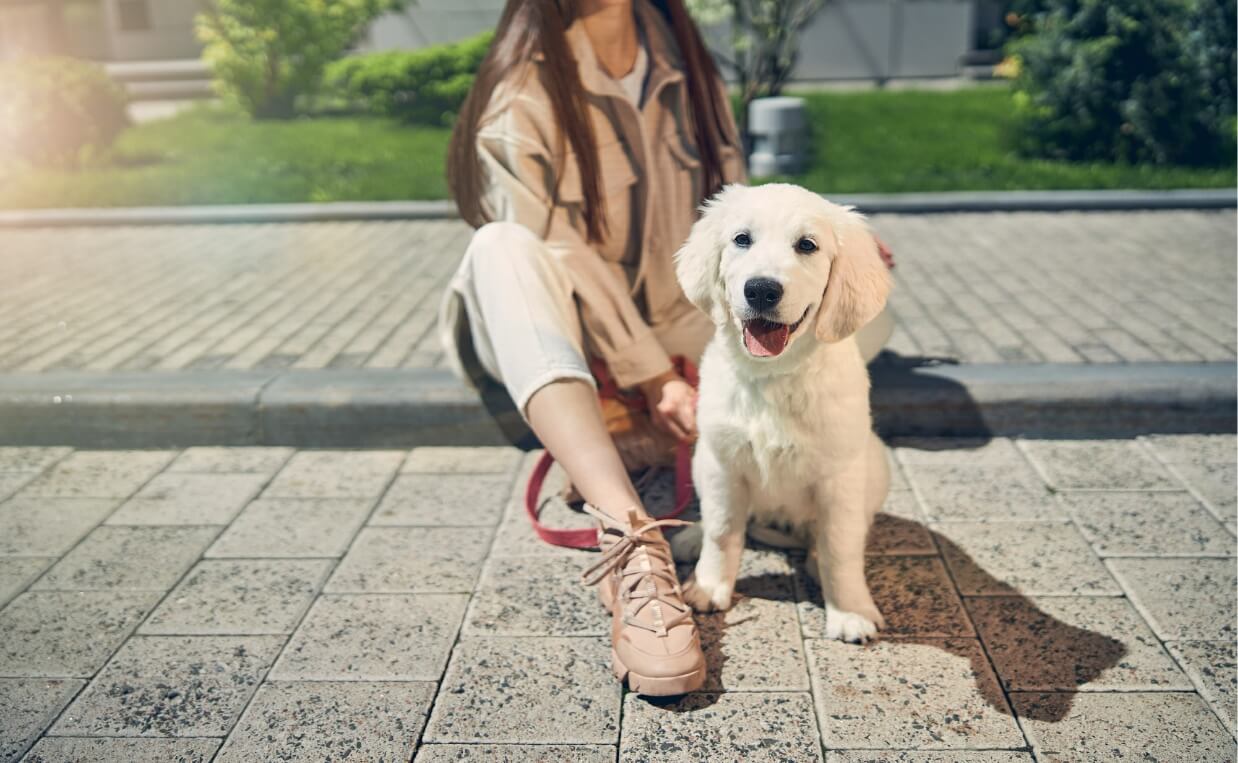
If you have taken your dog for a veterinary visit in the last year, you may have experienced “curbside veterinary care.” Many veterinarians have been offering their services using a curbside service delivery model for a number of reasons. Not only does curbside veterinary service protect you from COVID-19, it also protects the veterinary team and ensures the hospital can remain open to care for pets.
Currently, the CDC recommends veterinary service providers use telemedicine, curbside visits and telephone or video chat with clients in order to maintain social distancing.
How Does Curbside Veterinary Care Work?
Veterinarian hospitals providing curbside care have created new ways of providing services to avoid the need for clients to enter the lobby and exam rooms. The purpose of this is to promote limited human social contact and reduce the spread of COVID-19.
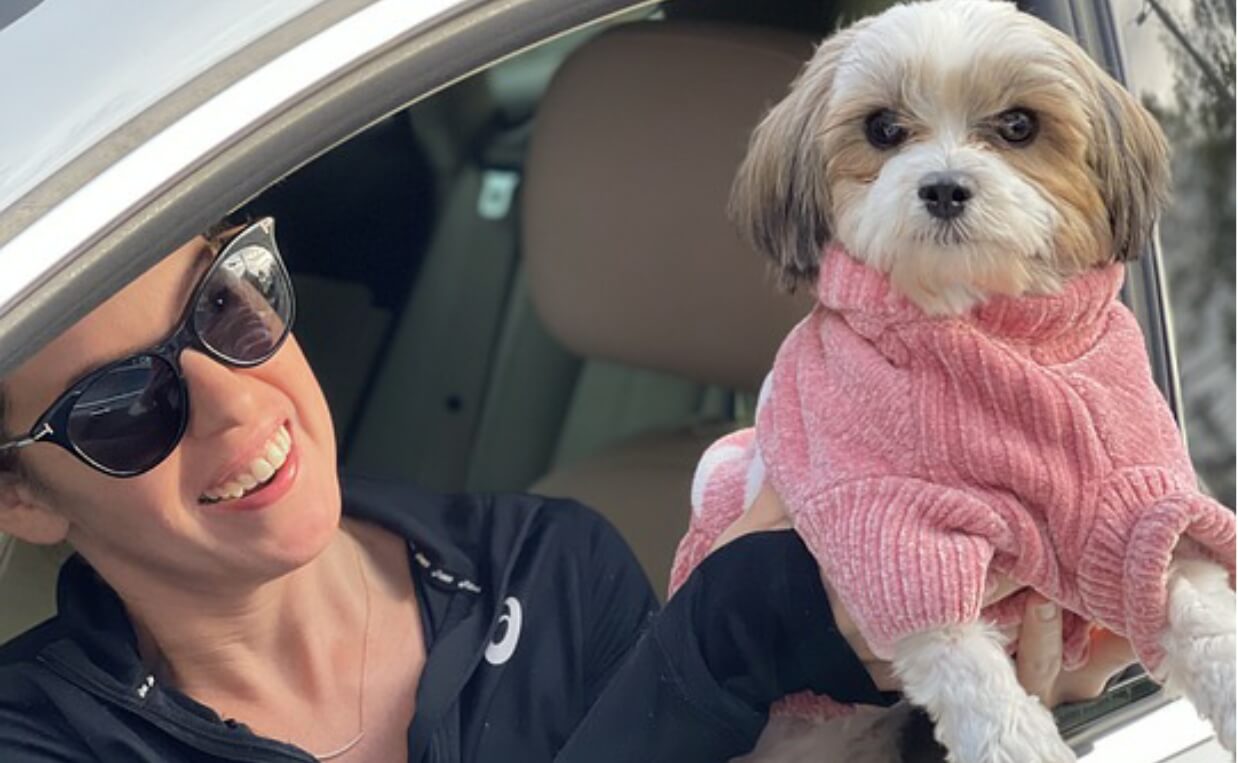
While the process may look a little different from practice to practice, usually it looks something like this.
- When you call the veterinary office to schedule a visit, the receptionist will take a brief statement about your concerns.
- You may be asked to fill out a form in advance of your dog’s appointment. The form may be online or it may be emailed to you.
- You arrive at the veterinarian hospital at your appointment time and call the receptionist to let them know you are there.
- A veterinary assistant or veterinary technician comes to your vehicle to retrieve your dog.
- The veterinary assistant or technician will review your dog’s symptoms and medical history. Bringing a written letter with your concerns will be a big help to convey detailed information. If you don’t bring a written document, a veterinary technician may speak with you at your car or may call you from inside the building to gather more in-depth information.
- The veterinarian will perform a thorough physical examination of your dog. Some hospitals ask dog parents to wait in the car during the exam and some allow you to leave the parking lot.
- The veterinarian or veterinary technician will call you with an update on your dog’s health concern. An estimate for recommended services will usually be provided at this time.
- Diagnostics and treatment are performed as authorized.
- Your dog is returned to you and payment is collected.
In some cases, curbside visits will be combined with telemedicine, such as a teleconference or video conferencing. Some veterinary offices will text you when it’s time to pick your dog up or with other simple messages. Some offices have cameras set up in the exam rooms so you can watch the veterinarian examine your dog.
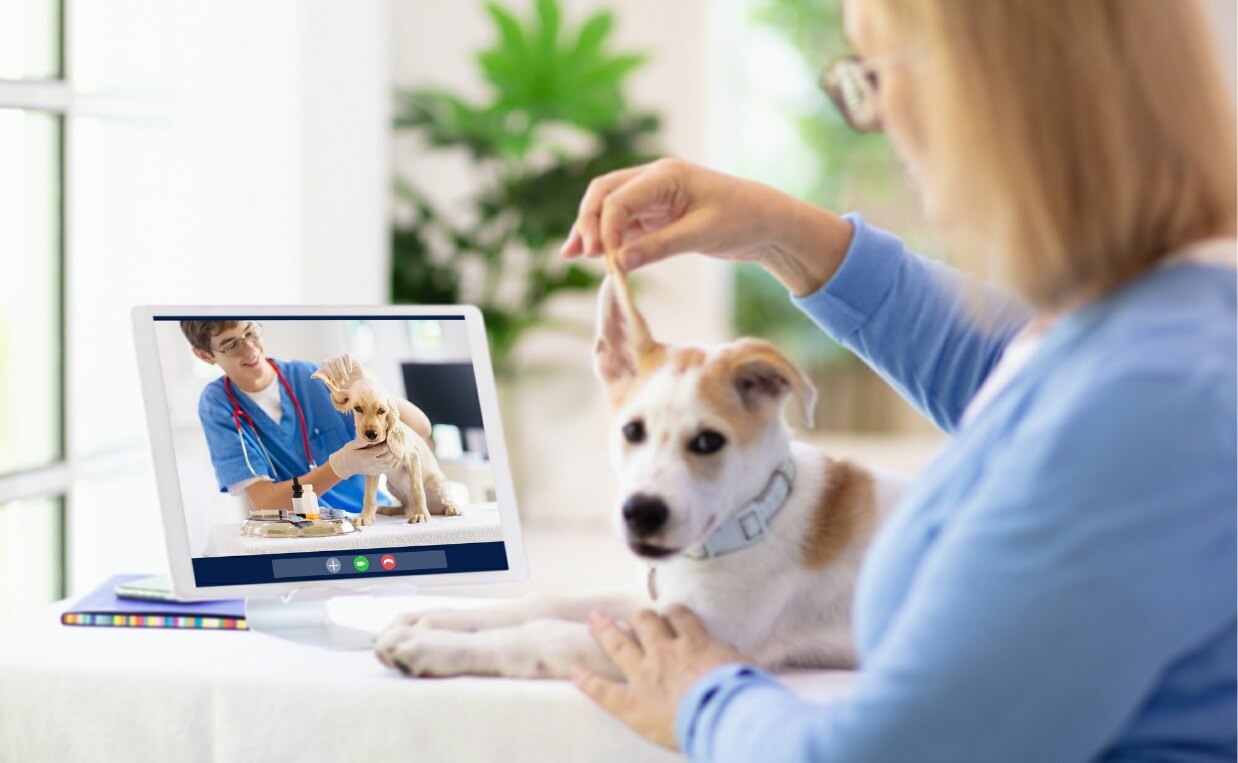
Benefits of Curbside Care
Veterinary curbside care offers a number of benefits for you and your dog.
First of all, curbside care reduces or eliminates the need for dog owners to enter the veterinary hospital. Veterinarian hospitals are busy places, with lots of employees and clients entering and exiting the lobby and exam rooms on a daily basis. Keep in mind most veterinary hospitals are small buildings, unlike large commercial stores. Smaller buildings offer less ventilation than large facilities. A single positive person could potentially trigger a large outbreak.
Secondly, if there is an outbreak in a veterinary hospital, it is likely the facility will be shut down. If that were to happen, the patients would have to be referred to other veterinary practices in the area. Curbside services increase the likelihood your veterinary team will be available for your dog and the other animals in their care.
Interestingly, pets seem to do better with curbside care. The exams move faster because the pet parent isn’t there. Veterinary assistants know how to hold the pet in a way that keeps them calm. Also, the building is quieter because there are less people coming and going. There’s less chaos and this seems to helps pets relax. Dogs prone to nervousness tend to be less nervous.
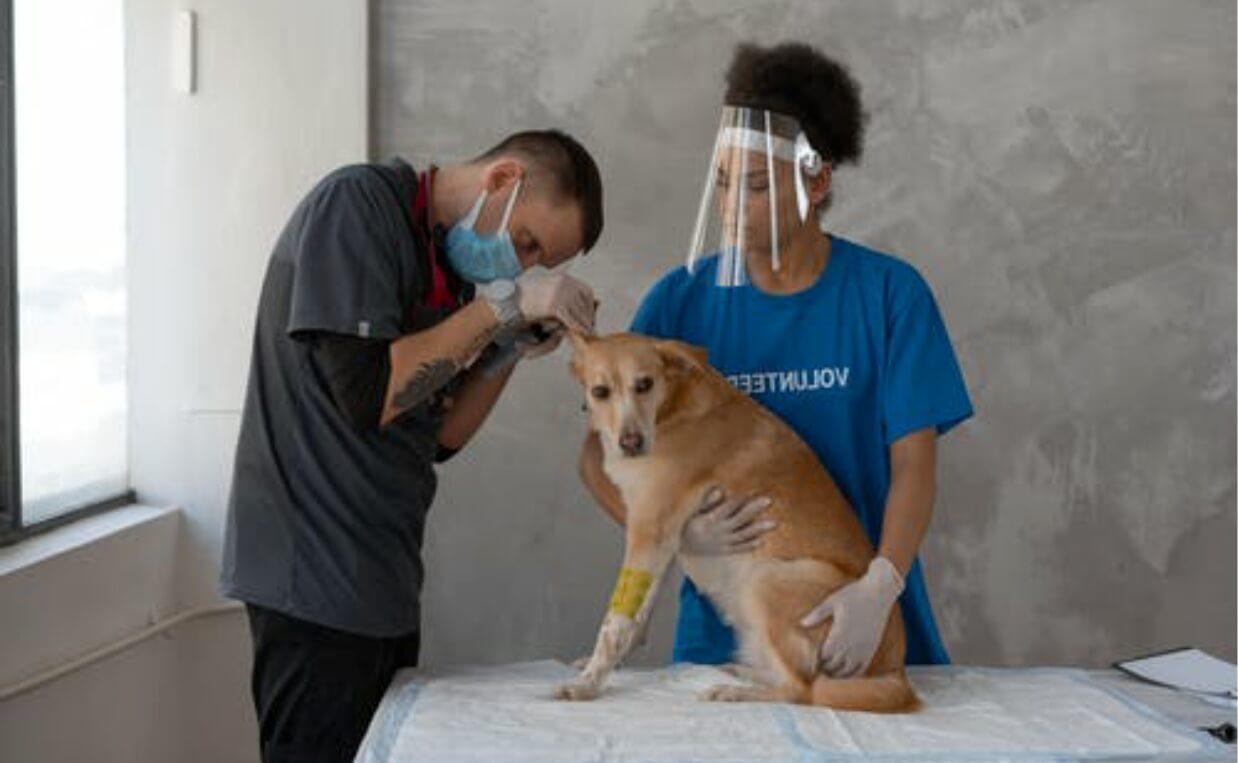
Are There Exceptions to Curbside Care?
In almost all veterinary hospital, exceptions to curbside care are rare. The one exception to this is euthanasia. Veterinarians understand euthanasia is an emotional time and strive to allow clients time to be with their pets, if possible. Usually, there are alternative physical distancing plans for euthanasia. Ask your veterinarian if you have questions about euthanasia procedures during COVID-19 restrictions.
Will My Dog Be Anxious Without Me?
While it is understandable you might worry your dog will be anxious without you there, surprisingly, most dogs do better and appear less stressed with curbside care. This may be due to fewer people and other animals visible in the lobby and throughout the hospital, or less noise in the environment.
Some dogs prone to severe anxiety during veterinary visits my need help minimizing their stress. Speak with the receptionist when scheduling your visit about your concerns. If your dog experiences high anxiety or stress during their veterinary visits, a mild anti-anxiety medication may be administered before the visit.
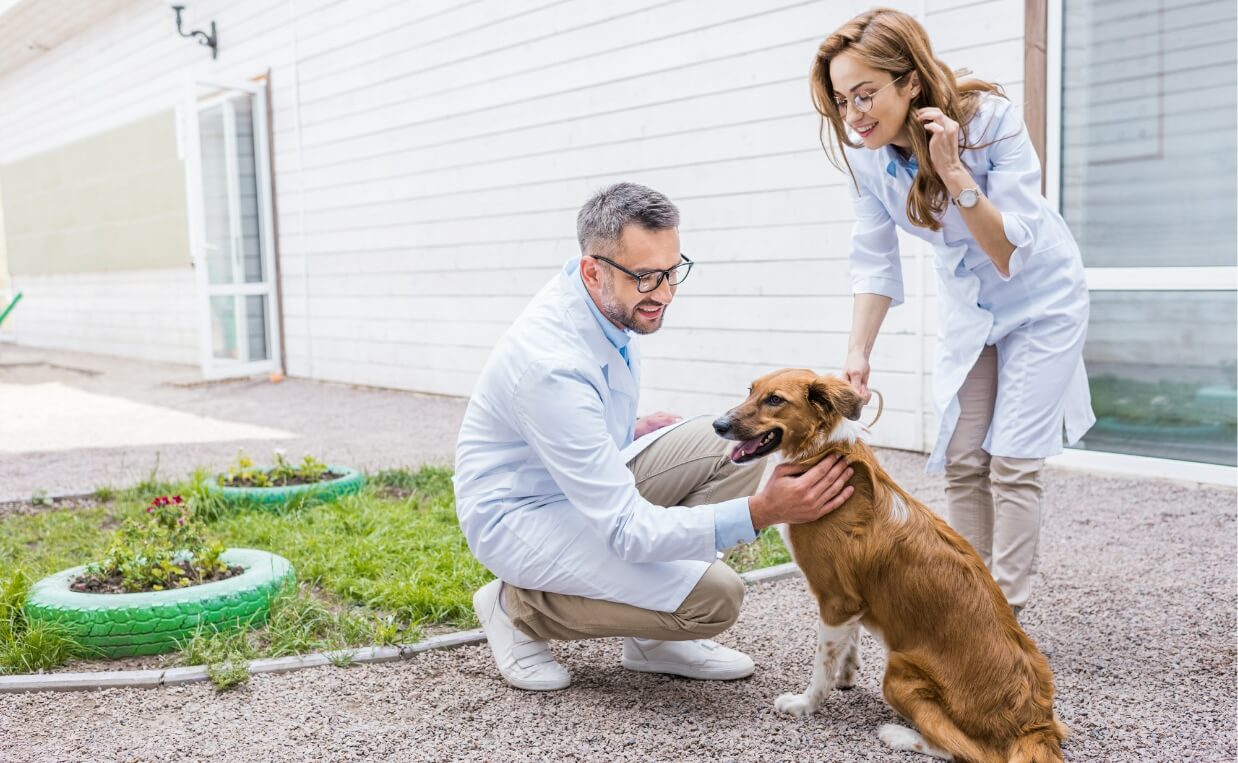
Will I Still Be Able to Speak with My Veterinarian?
Even if your veterinary hospital provides services using a curbside care model, in most cases you will be able to speak with your veterinarian, usually via telephone or video conferencing. Most veterinarians call clients prior to discharging the patient in order to discuss findings and recommendations.
Occasionally, if the veterinarian is called away for an emergency, you may end up speaking with a veterinary technician or assistant. If you still have questions, request a follow-up call from your veterinarian to discuss further concerns or details.
How Can Pet Parents Help Make Curbside Visits Go Smoothly?
One of the most important things you can do to help with curbside care is to write a letter outlining your concerns. Bring your document with you and give it to the veterinary assistant or technician who comes to retrieve your dog. Make sure it includes any information you think would be helpful as well as any special requests.
If your dog has a certain area you would like examined, draw a diagram on your paper to show the veterinarian where the area is located. You can also use a washable marker to draw a circle around the area or clip a small amount of fur near the area so the veterinarian can find the area. You can also take a photo of the area and send it via email or text message ahead of time.
Be sure to bring your mobile phone with you to the visit. You will need your phone to call the receptionist when you arrive and to communicate with your veterinary team while your dog is in the hospital.
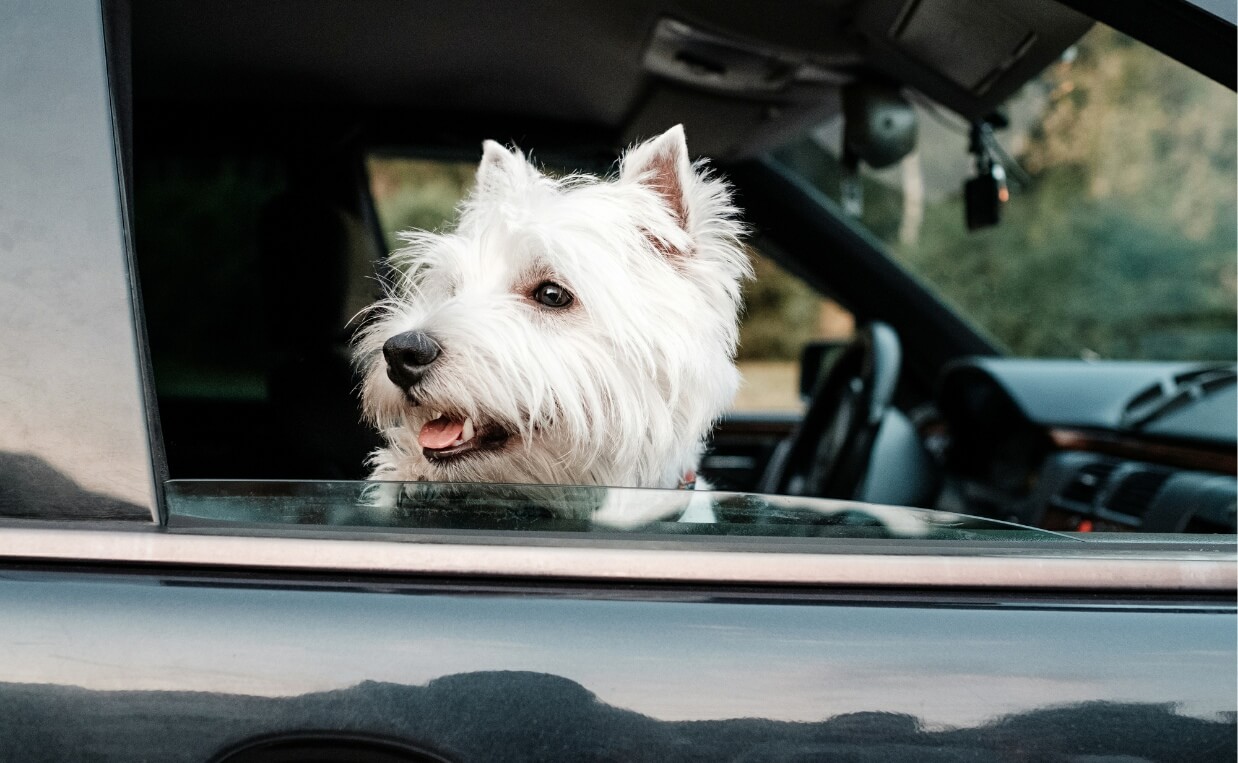
Will Veterinarians Continue to Offer Curbside Care After the Pandemic?
Most veterinary hospitals don’t plan to stay completely curbside but are considering offering a hybrid service. There are many benefits of curbside, telemedicine and video-conferencing, especially reducing the stress of the animal patients. Pet parents don’t need to be present for all types of appointments. Routine care can certainly be done without clients coming in with their dogs. Food and medicine pick-ups can have the option to pay over the phone or online and have the items delivered to the client’s car in the parking lot.
Curbside care has prompted many veterinary hospitals to rethink their processes, creating greater efficiencies. New practices, such as telemedicine, online payments and curbside service allows veterinarians to deliver more care to more pets because it gives people options.
The coronavirus pandemic has helped many people value their pets more than ever. Veterinarian services are also more important than ever. Finding ways to expedite services, as well as helping sick and injured animals experience less stress, helps everyone in the long run. Despite the negatives of COVID-19, there have been some silver linings. And veterinary curbside service may be one of them.
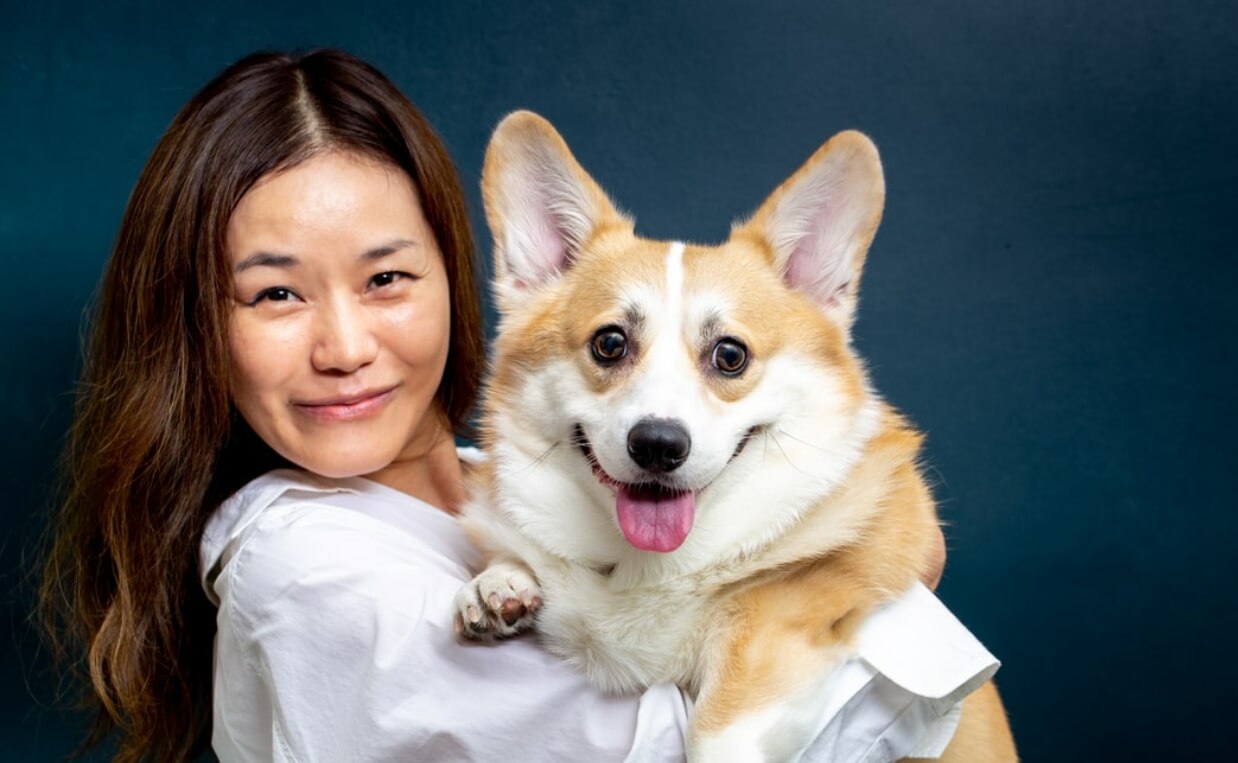
Have you experienced curbside veterinary services for your dog? Did you like or dislike the service delivery model? Please share your experience with the rest of the Canine Campus community in the comments below…

 What Every Dog Owner Needs to Know About Canine Anemia
What Every Dog Owner Needs to Know About Canine Anemia Xylitol Poisoning in Dogs
Xylitol Poisoning in Dogs What Every Dog Owner Should Know About Skin Lumps and Bumps in Dogs
What Every Dog Owner Should Know About Skin Lumps and Bumps in Dogs Home Remedies – How to Treat Your Dog’s Upset Stomach at Home
Home Remedies – How to Treat Your Dog’s Upset Stomach at Home How to Care for a Dog with Cushing’s Disease: A Comprehensive Guide
How to Care for a Dog with Cushing’s Disease: A Comprehensive Guide






Leave a Reply